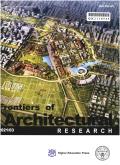Architectural phenomenology: Past, present, future of an interdisciplinarity
IF 3.6
1区 艺术学
0 ARCHITECTURE
引用次数: 0
Abstract
This article investigates the interdisciplinary nature of what is frequently referred to as architectural phenomenology. By highlighting the intricacy of architecture's disciplinarity, it exposes the paradoxical attitude of architectural phenomenology towards crossing disciplinary borders, and sets out to contextualize the paradoxical attitude about interdisciplinary research in history. Following three thematic threads representative of the tradition centered on Ernesto Nathan Rogers, Christian Norberg-Schulz, and the Essex school, it showcases the diverse modalities of how architecture and phenomenology were combined in the past, and identifies a significant gap in their limited interpretations of the relation between these two fields, often characterized by a one-sided illumination. Drawing attention to the insufficiently theorized reciprocity between architecture and philosophy, it reveals in architectural phenomenology an interdisciplinary interplay implicitly involving all other disciplines, which offers unlimited possibilities of research to be further explored. Taking a closer look at the interdisciplinary nature of architecture and phenomenology, it speculates on the future directions of architectural phenomenology acting as an interdisciplinary arena, pointing to phenomenology's recent interest in enactivist cognitive science and architecture's critical engagement with socio-political issues that converge in an investigation of the built environment.
建筑现象学:跨学科的过去、现在和未来
本文调查了经常被称为建筑现象学的跨学科性质。通过强调建筑学科的复杂性,它揭示了建筑现象学对跨越学科边界的矛盾态度,并着手将历史上跨学科研究的矛盾态度置于语境中。遵循以Ernesto Nathan Rogers、Christian Norberg-Schulz和Essex学派为中心的三个代表传统的主题线索,它展示了过去建筑和现象学如何结合的不同模式,并确定了他们对这两个领域之间关系的有限解释的显著差距,通常以片面的照明为特征。它引起了人们对建筑和哲学之间缺乏理论化的互惠关系的关注,揭示了建筑现象学中隐含地涉及所有其他学科的跨学科相互作用,这为进一步探索提供了无限的研究可能性。仔细观察建筑和现象学的跨学科性质,它推测了建筑现象学作为跨学科领域的未来方向,指出现象学最近对激进认知科学和建筑对社会政治问题的批判性参与的兴趣,这些问题在建筑环境的调查中汇聚在一起。
本文章由计算机程序翻译,如有差异,请以英文原文为准。
求助全文
约1分钟内获得全文
求助全文
来源期刊

Frontiers of Architectural Research
ARCHITECTURE-
CiteScore
6.20
自引率
2.90%
发文量
430
审稿时长
30 weeks
期刊介绍:
Frontiers of Architectural Research is an international journal that publishes original research papers, review articles, and case studies to promote rapid communication and exchange among scholars, architects, and engineers. This journal introduces and reviews significant and pioneering achievements in the field of architecture research. Subject areas include the primary branches of architecture, such as architectural design and theory, architectural science and technology, urban planning, landscaping architecture, existing building renovation, and architectural heritage conservation. The journal encourages studies based on a rigorous scientific approach and state-of-the-art technology. All published papers reflect original research works and basic theories, models, computing, and design in architecture. High-quality papers addressing the social aspects of architecture are also welcome. This journal is strictly peer-reviewed and accepts only original manuscripts submitted in English.
 求助内容:
求助内容: 应助结果提醒方式:
应助结果提醒方式:


